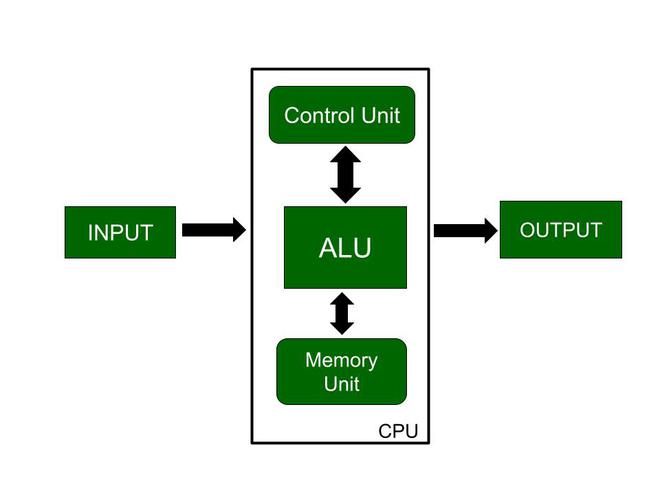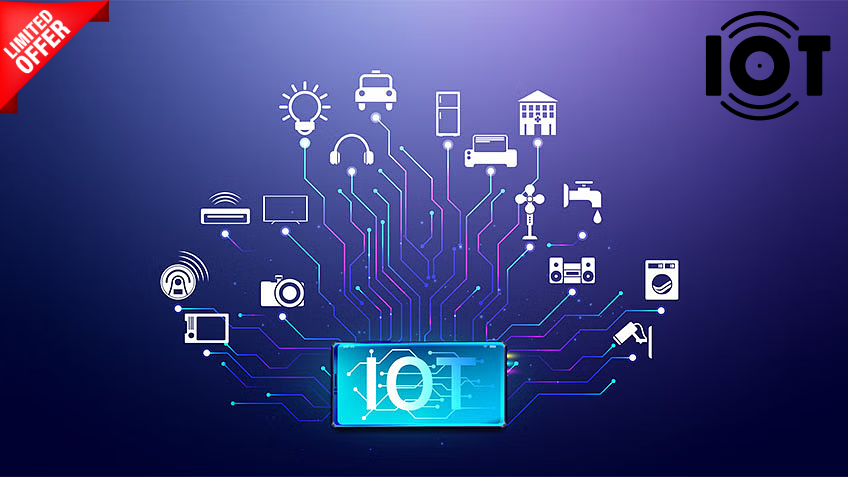Iot Devices Examples In Daily Life Iot Devices In India What Are IoT Devices? Definition, Types, and 5 Most Popular for 2024
Introduction to IoT
What Are IoT Devices? Definition, Types, and 5 Most Popular for 2024
The Internet of Things (IoT) represents a transformative paradigm in modern technology. Iot Devices Examples In Daily Life Iot Devices In India It refers to the interconnected network of physical devices embedded with sensors, software, and other technologies that enable them to collect and exchange data over the Internet. This ecosystem of connected devices has the potential to revolutionize industries, enhance everyday life, and drive the digital economy forward. What Are IoT Devices? Definition, Types, and 5 Most Popular for 2024
History and Evolution of IoT
The concept of IoT can be traced back to the early 1980s, when the first connected device—a Coca-Cola vending machine—was implemented at Carnegie Mellon University. However, it wasn’t until the late 1990s that the term “Internet of Things” Iot Devices Examples In Daily Life Iot Devices In India was coined by Kevin Ashton, a British technology pioneer. Since then, advancements in wireless technology, cloud computing, and data analytics have accelerated the growth and adoption of IoT. What Are IoT Devices? Definition, Types, and 5 Most Popular for 2024
Key Components of IoT Devices
- Sensors and Actuators: Sensors are the critical components that capture data from the environment, such as temperature, humidity, motion, and light. Actuators, on the other hand, perform actions based on data received, such as adjusting a thermostat or turning on a light.
- Connectivity: IoT devices communicate with each other and with central systems via various communication protocols, including Wi-Fi, Bluetooth, Zigbee, and cellular networks.
- Data Processing: Once the data is collected, it is processed either locally on the device or transmitted to a cloud-based platform for further analysis. This processing can involve simple computations or complex algorithms, depending on the application.
- User Interface: Many IoT devices come with a user interface that allows users to interact with the system, configure settings, and receive notifications. This interface can be a mobile app, web dashboard, or even voice commands. What Are IoT Devices? Definition, Types, and 5 Most Popular for 2024
Applications of IoT Devices
IoT devices have a wide range of applications across various sectors:
- Smart Homes: IoT devices like smart thermostats, security cameras, smart locks, and connected appliances enhance convenience, security, and energy efficiency in homes.
- Healthcare: Wearable devices and remote monitoring systems enable continuous health tracking and personalized medical care, improving patient outcomes and reducing healthcare costs.
- Industrial IoT (IIoT): In manufacturing and logistics, IoT devices optimize operations, monitor equipment health, and enhance supply chain efficiency through predictive maintenance and real-time tracking.
- Agriculture: IoT-enabled sensors monitor soil conditions, weather patterns, and crop health, allowing farmers to make data-driven decisions and improve agricultural productivity.
- Transportation: Connected vehicles and smart traffic management systems enhance road safety, reduce congestion, and improve the efficiency of transportation networks.
- Retail: IoT devices in retail environments facilitate inventory management, personalized shopping experiences, and efficient supply chain operations.
Benefits of IoT Devices
- Efficiency and Automation: IoT devices automate routine tasks and processes, leading to increased efficiency and productivity in various sectors.
- Data-Driven Insights: By collecting and analyzing data, IoT devices provide valuable insights that help businesses make informed decisions and improve their operations.
- Enhanced Customer Experience: Personalized services and proactive support enabled by IoT devices lead to improved customer satisfaction and loyalty.
- Cost Savings: IoT-driven automation and optimization reduce operational costs, energy consumption, and maintenance expenses.
Challenges and Concerns
- Security and Privacy: The widespread deployment of IoT devices raises concerns about data security and privacy. Ensuring robust security measures and protecting user data from breaches are critical challenges.
- Interoperability: With numerous IoT devices and platforms available, achieving seamless interoperability between different systems and standards remains a significant hurdle.
- Scalability: As the number of connected devices grows, ensuring the scalability of IoT infrastructure to handle vast amounts of data and maintain performance is essential.
- Regulatory and Compliance Issues: Navigating the regulatory landscape and ensuring compliance with data protection and privacy laws is crucial for the successful implementation of IoT solutions.
Future Trends in IoT
- Edge Computing: Shifting data processing closer to the source (at the edge) rather than relying solely on cloud computing will reduce latency and improve real-time decision-making.
- Artificial Intelligence (AI) Integration: Combining IoT with AI will enable more sophisticated data analysis, predictive maintenance, and autonomous decision-making.
- 5G Connectivity: The rollout of 5G networks will provide faster and more reliable connectivity, enhancing the performance and capabilities of IoT devices.
- Blockchain for Security: Implementing blockchain technology can enhance the security and transparency of IoT networks by providing decentralized and tamper-proof data storage.
- Sustainable IoT: Developing eco-friendly IoT solutions that minimize energy consumption and electronic waste will become increasingly important as the adoption of IoT grows. What Are IoT Devices? Definition, Types, and 5 Most Popular for 2024
Detailed Analysis of IoT Devices
Key IoT Devices and Their Functions
Let’s delve into some of the most prominent IoT devices and understand their specific functions and benefits. What Are IoT Devices? Definition, Types, and 5 Most Popular for 2024
- Smart Thermostats:
- Function: Smart thermostats, like the Nest Thermostat, learn user preferences and automatically adjust heating and cooling systems for optimal comfort and energy savings.
- Benefits: Energy efficiency, reduced utility bills, remote control via mobile apps, and enhanced comfort.
- Smart Security Systems:
- Function: These systems include smart cameras, doorbells, and locks that provide real-time surveillance and control over home security.
- Benefits: Enhanced security, remote monitoring, instant alerts, and integration with other smart home devices for comprehensive security solutions.
- Wearable Health Devices:
- Function: Wearables like fitness trackers and smartwatches monitor health metrics such as heart rate, activity levels, and sleep patterns. What Are IoT Devices? Definition, Types, and 5 Most Popular for 2024
- Benefits: Continuous health monitoring, personalized health insights, early detection of health issues, and motivation for a healthier lifestyle. What Are IoT Devices? Definition, Types, and 5 Most Popular for 2024
- Industrial Sensors:
- Function: In manufacturing, industrial sensors monitor equipment performance, environmental conditions, and production processes. What Are IoT Devices? Definition, Types, and 5 Most Popular for 2024
- Benefits: Predictive maintenance, reduced downtime, improved efficiency, and enhanced safety in industrial environments. What Are IoT Devices? Definition, Types, and 5 Most Popular for 2024
- Agricultural Drones:
- Function: Drones equipped with sensors and cameras monitor crop health, soil conditions, and irrigation needs. What Are IoT Devices? Definition, Types, and 5 Most Popular for 2024
- Benefits: Precision agriculture, increased crop yields, reduced resource usage, and better pest management. What Are IoT Devices? Definition, Types, and 5 Most Popular for 2024

- Connected Vehicles:
- Function: Connected vehicles utilize IoT technology for navigation, traffic management, and vehicle-to-vehicle communication. What Are IoT Devices? Definition, Types, and 5 Most Popular for 2024
- Benefits: Improved road safety, reduced traffic congestion, enhanced driving experience, and optimized fuel consumption.
IoT Ecosystem and Architecture
The IoT ecosystem consists of various layers that work together to enable the functioning of IoT devices. Understanding this architecture is crucial for implementing effective IoT solutions.
- Device Layer:
- Components: Sensors, actuators, and embedded systems that collect data and perform actions.
- Function: Capturing real-time data from the physical environment and interacting with it.
- Connectivity Layer:
- Components: Communication protocols and networks such as Wi-Fi, Bluetooth, Zigbee, LTE, and 5G.
- Function: Enabling data transmission between devices and the cloud or other devices.
- Edge Computing Layer:
- Components: Edge devices and gateways that process data locally.
- Function: Reducing latency, improving response times, and minimizing bandwidth usage by processing data closer to the source.
- Cloud Layer:
- Components: Cloud platforms and services that store, process, and analyze data.
- Function: Providing scalable storage, advanced analytics, and centralized management of IoT data.
- Application Layer:
- Components: User interfaces, mobile apps, and web dashboards.
- Function: Allowing users to interact with IoT devices, configure settings, and visualize data.
Security and Privacy in IoT
Security and privacy are paramount concerns in the IoT landscape. The vast amount of data collected and transmitted by IoT devices makes them attractive targets for cyberattacks.
- Common Security Threats:
- Data Breaches: Unauthorized access to sensitive data stored on IoT devices or transmitted over networks.
- Device Hijacking: Compromising IoT devices to gain control and use them for malicious activities.
- Denial of Service (DoS) Attacks: Overloading IoT networks or devices to disrupt services.
- Security Best Practices:
- Encryption: Using strong encryption protocols for data transmission and storage.
- Authentication: Implementing robust authentication mechanisms to verify the identity of users and devices.
- Regular Updates: Ensuring IoT devices receive regular firmware and software updates to patch vulnerabilities.
- Network Segmentation: Isolating IoT devices from critical networks to contain potential breaches.
- Privacy Concerns:
- Data Collection: Transparency in data collection practices and obtaining user consent.
- Data Anonymization: Implementing techniques to anonymize data and protect user identities.
- Regulatory Compliance: Adhering to data protection regulations such as GDPR and CCPA.
IoT in Everyday Life
IoT devices are becoming integral to everyday life, transforming how we interact with technology and our surroundings.
- Smart Home Devices:
- Examples: Smart speakers, connected lighting, and smart appliances.
- Impact: Increased convenience, energy savings, and enhanced quality of life.
- Health and Wellness:
- Examples: Wearable fitness trackers, smart scales, and health monitoring devices.
- Impact: Improved health awareness, personalized health management, and better healthcare outcomes.

- Personal Assistants:
- Examples: Voice-activated assistants like Amazon Alexa and Google Assistant.
- Impact: Simplified daily tasks, seamless control of smart home devices, and access to information through voice commands.
- Smart Cities:
- Examples: Smart traffic lights, waste management systems, and public safety monitoring.
- Impact: Enhanced urban living, reduced environmental impact, and improved public services.
The Economic Impact of IoT
The proliferation of IoT devices has significant economic implications, driving innovation, creating new business opportunities, and transforming industries.
- Market Growth:
- Statistics: The global IoT market is projected to reach $1.5 trillion by 2027, with billions of connected devices in use.
- Drivers: Technological advancements, decreasing costs of IoT devices, and increasing demand for connected solutions.
- Business Transformation:
- Industries: Manufacturing, healthcare, agriculture, transportation, and retail.
- Opportunities: New revenue streams, enhanced customer experiences, and operational efficiencies.
- Job Creation:
- Skills: Increased demand for professionals with expertise in IoT, data analytics, cybersecurity, and AI.
- Opportunities: Emerging roles in IoT development, system integration, and data analysis.
Conclusion
The Internet of Things is a groundbreaking technology that connects devices, people, and processes in unprecedented ways. As IoT continues to evolve, it promises to bring about significant improvements in efficiency, productivity, and quality of life across various sectors. However, addressing the challenges related to security, privacy, and interoperability is crucial to fully harnessing the potential of IoT. By embracing innovation and implementing best practices, we can build a connected world that is smarter, safer, and more sustainable.

2 thoughts on “What Are IoT Devices? Definition, Types, and 5 Most Popular for 2024”